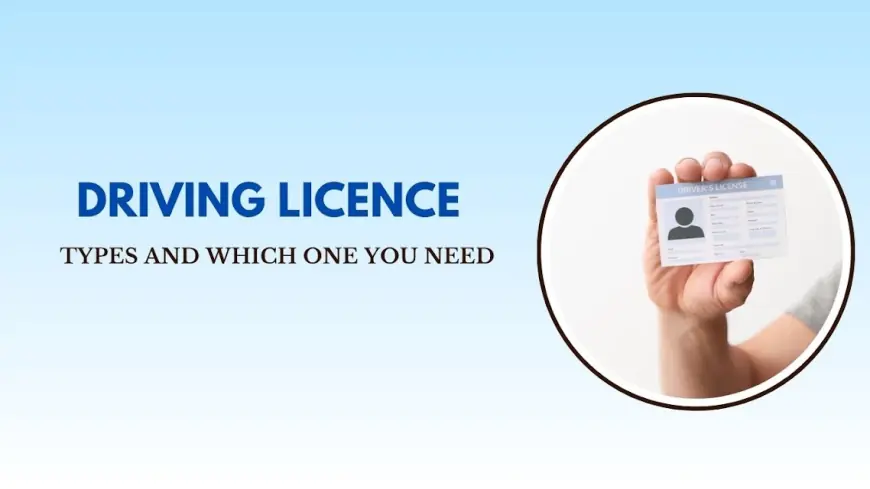Driving Licence Types and Which One You Need
In India, there are different types of Driving licences based on the kind of vehicle you want to drive. For example, the licence for a motorcycle is different

Driving is a skill that many people use every day for personal travel, business, or work. But to drive legally on Indian roads, you must have a valid driving licence. A driving licence is an official document given by the Regional Transport Office (RTO), which proves that you are allowed to drive a specific type of vehicle.
In India, there are different types of Driving Licence based on the kind of vehicle you want to drive. For example, the licence for a motorcycle is different from the one needed for a truck. Many people are confused about which licence they need. This guide will explain the types of driving licences in India, their use, and how you can choose the right one for yourself.
What is a Driving Licence?
A driving licence is a legal document issued by the government that permits you to drive a vehicle on the road. It shows that you understand road rules and can drive safely. It includes:
-
Your name and photo
-
Your address
-
Date of birth
-
Type of vehicle you are allowed to drive
-
Validity period of the licence
-
Licence number
Without a valid licence, driving on public roads is illegal and can lead to fines, penalties, or even jail time in serious cases.
Types of Driving Licences in India
There are mainly two categories of licences in India:
-
Personal Use Licence (for private use)
-
Commercial Use Licence (for transport or business use)
Let’s break them down one by one.
Documents Needed to Apply for Driving Licence
Here is a list of commonly required documents:
-
Aadhaar Card or Voter ID (as address proof)
-
Birth certificate or school certificate (as age proof)
-
Passport-size photos
-
PAN Card
-
Learner’s licence (if applying for permanent licence)
-
Application fees
Validity of Driving Licence
-
Learner’s Licence: 6 months
-
Permanent Licence (Private): 20 years or until age 40
-
Permanent Licence (Commercial): 3 to 5 years
-
After 40 years of age: Licence must be renewed every 10 years
Penalties for Driving Without Licence
If you drive without a valid licence:
-
You may be fined up to ₹5000
-
You may be banned from applying for a licence for some time
-
In case of accidents, you may face serious legal trouble
Importance of Having the Right Licence
-
Legal safety: Protects you from police action
-
Road safety: Shows you know driving rules
-
Insurance claim: Needed to get insurance benefits
-
Job eligibility: Required if driving is your job
-
Avoid fines and penalties
Renewal and Duplicate Licence
If Your Licence Expires:
-
Apply for renewal before expiry or within 1 year after expiry
-
Pay small renewal fee and submit the form online
If Your Licence is Lost or Damaged:
-
Apply for duplicate licence
-
Provide FIR copy, ID proof, and fees
Tips for New Drivers
-
Always drive with valid licence and insurance
-
Wear a helmet or seatbelt
-
Avoid using phones while driving
-
Follow traffic rules strictly
-
Drive at safe speeds
-
Practice before taking your driving test
Suggested read- How to Check Driving Licence Status in India
Conclusion
Driving is a daily need for many people, but it comes with responsibility. A driving licence is not just a card; it is proof of your skill, responsibility, and legality. It keeps you safe and protects you from legal problems.
Knowing the different types of driving licences helps you apply for the correct one. Whether you want to ride a scooter, drive a car, or operate a truck, there is a licence made for that purpose.
Before you start driving, make sure you understand which licence you need and how to get it. Always drive responsibly, and keep your licence valid and updated.
Getting the right driving licence is your first step to safe and legal driving on Indian roads.
What's Your Reaction?
 Like
0
Like
0
 Dislike
0
Dislike
0
 Love
0
Love
0
 Funny
0
Funny
0
 Angry
0
Angry
0
 Sad
0
Sad
0
 Wow
0
Wow
0

















































